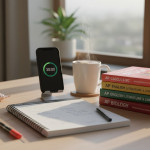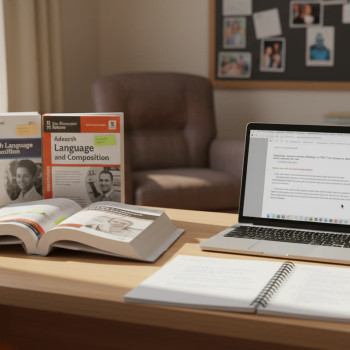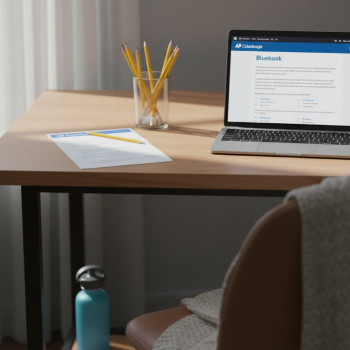Introduction: Why This Comparison Matters
Switching between exam systems — or simply trying to understand how one system’s practical science expectations relate to another — can feel like learning a new language. If you’re a student moving between A Level and AP (Advanced Placement) science courses, or a parent trying to help, this guide is for you. We’ll demystify the A Level Practical Endorsement and AP Lab Evidence, explain what examiners look for, and give concrete, student-friendly strategies to build and present practical skills that stand up in either system.
A note on voice
Think of this as a conversation over coffee. Expect clear examples, actionable checklists, and a realistic plan you can tailor to your situation. Where it naturally fits, I’ll mention how Sparkl’s personalized tutoring (1-on-1 guidance, tailored study plans, expert tutors, and AI-driven insights) can support your progress — but only when it helps.

Quick definitions: What each system expects
Before we compare, let’s define the two things we’re talking about in plain terms.
- A Level Practical Endorsement: In many A Level science courses (e.g., Biology, Chemistry, Physics), the Practical Endorsement is a formal recognition that a student has completed a required set of hands-on practical activities and demonstrated competence in practical techniques, planning, analysis, and safety. It is typically reported separately from the A Level grade and is awarded after internal assessment and teacher verification.
- AP Lab Evidence: AP science exams (such as AP Biology, AP Chemistry, AP Physics) require students to engage with lab-based investigations during the course. While the AP score is based primarily on the standardized exam, the College Board expects that students have completed a sequence of lab experiences and can apply investigative skills and data analysis on the exam. Instructors may collect lab notebooks or practical reports; the AP Digital Portfolio (where used) or in-class assessments provide documentation of students’ lab work.
Core similarities and differences
At their heart, both systems value the same scientific habits: careful observation, methodical planning, safe practice, accurate measurement, data analysis, and clear argumentation. But they differ in emphasis, documentation, and how the practical work factors into final certification.
Similarities
- Both expect familiarity with common laboratory techniques and equipment.
- Both require students to collect and analyze data, and to communicate results with evidence and reasoning.
- Both emphasize safety, ethical conduct, and reproducible methods.
Differences
- Assessment structure: A Level Practical Endorsement is a teacher-assessed endorsement separate from the final A Level grade. AP lab work informs learning and is reflected indirectly on the AP exam, which is externally marked.
- Documentation: A Level often requires formal logs or portfolios verified by teachers for endorsement. AP instructors may use lab notebooks, digital portfolios, or class records, but the College Board’s main external measure is the exam performance.
- Formality and standardization: A Level practical assessment follows national/regional criteria for an endorsement; AP relies on curriculum frameworks and exam tasks that assume lab experience but do not award a separate practical certificate in most cases.
What examiners and teachers look for — unpacking the expectations
Whether you’re building an A Level endorsement file or preparing lab evidence for AP-style evaluation, six practical competencies are repeatedly judged. Think of them as the pillars of practical science.
- Experimental planning: Can the student design a fair test, identify variables, and plan controls and repeats?
- Technical proficiency: Can the student carry out techniques accurately and safely?
- Data collection: Are measurements precise, systematic, and well-recorded?
- Data analysis: Can the student process raw data into tables, graphs, and calculations and comment on uncertainty or trends?
- Interpretation and reasoning: Can the student connect results to scientific models, explain discrepancies, and draw evidence-based conclusions?
- Communication and reflection: Are methods, results, and limitations clearly presented? Does the student suggest improvements?
Practical tips to meet both sets of expectations
These tips are practical — things you can do in class, at home, or with a tutor. They’re designed to produce evidence that satisfies both A Level endorsement requirements and the investigative questions you’ll see on AP exams.
1. Keep a disciplined lab notebook (or digital log)
The lab notebook is your single most valuable piece of evidence. Make it habit to:
- Date every entry and write a short aim and hypothesis.
- Record materials and exact methods — someone else should be able to reproduce your experiment from your notes.
- Log raw data clearly, with units, instrument precision, and any anomalies.
- Include quick sketches or photographs when helpful and annotate them.
2. Emphasize quality over quantity
It’s better to run fewer experiments well than many poorly. For endorsement and for AP readiness, depth of analysis and careful handling of uncertainty matter more than the number of different techniques attempted.
3. Practice presenting data visually
Interpretation on exams often depends on your ability to read and make graphs quickly. Practice constructing and annotating:
- Line graphs with error bars.
- Bar charts that compare means with standard deviations.
- Scatter plots with trendlines and correlation commentary.
4. Write short method critiques after each lab
Spend 10 minutes after every practical writing what went well, what didn’t, and two specific improvements you would make. This reflection is golden evidence of scientific thinking.
5. Learn to estimate and report uncertainty
Understanding sources of error (systematic vs random), calculating percentage error, and communicating confidence builds trust in your conclusions — and examiners notice.
6. Translate vocabulary between systems
Some terms are used differently. For example, “method” and “protocol” are interchangeable; “practical competency” in A Levels aligns with “investigative skills” in AP guides. Keep a glossary page in your notebook to align the language.
Sample evidence table: What to collect and how to present it
| Evidence Type | Why It Matters | How to Present |
|---|---|---|
| Lab Notebook Entries | Primary proof of hands-on activity and process. | Neat dated pages with aims, raw data, calculations, and reflections. Include photos or scans if digital. |
| Formal Practical Report | Demonstrates structured scientific writing and analysis. | One-to-two page report: aim, concise method, results, discussion of uncertainty, and improvements. |
| Annotated Graphs | Shows ability to visualize and interpret data. | Clean axes, units, error bars, trendlines, and a short caption interpreting the trend. |
| Video or Photo Evidence | Confirms technical competence and safety practice. | Short clips (30–90s) of key technique with date/time stamps and a short written annotation. |
| Teacher Checklist or Verification | Often required for A Level endorsement; adds credibility. | Signed sheet or digital confirmation listing techniques observed and competencies met. |
How to adapt when resources are limited
Not every school has advanced lab equipment. That’s okay — creativity and clear reporting are powerful. Strategies include:
- Use household materials to model processes (e.g., osmosis with eggs or diffusion with food coloring) and focus on measurement precision and analysis.
- Run multiple repeats to improve reliability when instrument precision is low.
- Simulate advanced techniques with virtual labs, but pair simulations with real measurements and critique the differences.
Documenting substitutes
If you use a substitute material or virtual tool, explicitly document it and explain how it affects results and limitations. That honesty demonstrates scientific maturity.
Preparing for exam day: translating lab experience into exam answers
AP exams often include data analysis questions or experiment design prompts. To convert your practical experience into exam success:
- Practice timed responses where you analyze a dataset, draw a graph, and write a one-paragraph conclusion with an uncertainty statement.
- Memorize a small set of go-to phrases for lab conclusions (e.g., “Within experimental uncertainty…”, “A likely source of systematic error was…”, “To improve precision, I would…”)
- Work on sketching labeled diagrams quickly — examiners reward clarity more than artistic skill.
Study plan (12 weeks) to build transferable practical competence
This compact plan focuses on depth, reflection, and evidence collection so that whether you need an A Level endorsement or strong AP lab experience, you’ll be prepared.
- Weeks 1–2: Foundations — Set up your lab notebook, review safety rules, and perform 3 basic techniques (measurements, pipetting or burette skills, timing experiments). Write critiques after each.
- Weeks 3–5: Structured experiments — Run 4–5 longer investigations that require planning, at least two repeats each. Focus on accuracy and uncertainty analysis.
- Weeks 6–7: Independent mini-investigation — Design, execute, and report a short project with hypothesis, method, data, and reflection. This is prime A Level evidence.
- Weeks 8–9: Data presentation and critique — Turn raw data into publication-quality tables and graphs, practice writing concise conclusions with limitations.
- Weeks 10–11: Exam technique — Timed practice on AP-style data questions, sketch practice, and writing economy.
- Week 12: Final polish — Consolidate evidence, scan or photograph key pages, prepare teacher verification requests, and rehearse oral explanations.
How Sparkl’s personalized tutoring can fit in
For many students a few targeted sessions speed progress dramatically. Sparkl’s 1-on-1 tutors can help in ways that align with both A Level and AP expectations:
- Tailored study plans focused on acquiring specific lab competencies and building a strong evidence portfolio.
- Expert tutors who model experimental design and critique student lab notebooks, suggesting precise improvements.
- AI-driven insights that flag common errors in data handling and help prioritize which skills to practice next.
Used sparingly and strategically, personalized tutoring helps students focus practice, create higher-quality evidence, and build confidence for both the endorsement and the AP exam.
Common pitfalls and how to avoid them
- Pitfall: Vague methods. Fix: Always write enough detail for reproducibility — include volumes, timings, temperatures, and model numbers where relevant.
- Pitfall: Overlooking uncertainty. Fix: Practice simple uncertainty calculations and always comment on whether differences are meaningful.
- Pitfall: Poorly labeled data. Fix: Use units, significant figures appropriate to your instruments, and clear column headings.
- Pitfall: Waiting until the end to organize evidence. Fix: Curate as you go; weekly backups and a short summary page for each investigation make endorsement requests painless.
Examples: Two student stories
Stories make strategies concrete. Here are two typical journeys.
Student A: From A Level practical log to AP exam-ready skills
Sara’s A Level Biology teacher required verified competency with microscopy and titration techniques. Sara kept careful notebook pages with photos and short video clips of her technique. When she later took AP Biology, she found that the practice interpreting titration curves, calculating concentrations, and discussing systematic errors translated directly to the AP data-analysis questions. Her evidence portfolio made it easy for her to rehearse succinct statements about uncertainty and method improvements — valuable on timed AP free-response questions.
Student B: Limited resources, big improvements
Mateo’s school had limited equipment. He ran DIY investigations at home, using kitchen scales and household reagents for mass-based experiments and smartphone sensors for timing and light measurements. He documented everything carefully, explained limitations, and performed more repeats to increase reliability. Mateo’s clear reflections and honest limitation statements impressed his teacher and helped him write concise, evidence-based responses on the AP exam.
Checklist: Ready for endorsement or AP lab evidence?
- Are your lab notebook entries dated and complete? ✓
- Do you have at least one independent mini-investigation recorded in full? ✓
- Can you produce clean graphs with error bars from your data? ✓
- Have you written brief, honest critiques and suggestions for improvement after each lab? ✓
- Do you know three examples of systematic and three of random error from your experiments? ✓
- Is there a teacher verification or signature for core techniques if your A Level requires it? ✓
Final thoughts — science is a skill, not a one-time event
Whether your immediate goal is an A Level Practical Endorsement or robust AP lab evidence, remember this: practical science is best learned by doing, reflecting, and improving. The systems differ, but strong habits — careful recording, thoughtful analysis, and honest reflection — are universally rewarded. Build that habit, and you’ll not only check the boxes for endorsements and exams but become a better thinker and communicator.
Want targeted help?
If you or your student wants structured, efficient progress, consider brief, focused tutoring sessions to shore up weak spots. Sparkl’s personalized approach — combining expert tutors, one-on-one coaching, and AI-driven feedback — is a practical way to accelerate growth without reinventing the process. Even a few sessions can turn scattered lab notes into a compelling portfolio and boost confidence for exam day.

Appendix: Quick reference glossaries
Common practical terms and what examiners want to hear
- Repeat: Re-running an experiment to check consistency — examiners want evidence you considered reliability.
- Control: A baseline or standard used to compare your experimental changes — essential for valid comparisons.
- Systematic Error: A bias that shifts all measurements — describe possible sources and how they affect results.
- Random Error: Scatter in measurements due to instrument precision or human variation — demonstrate how repeats reduce its impact.
- Uncertainty: Quantitative or qualitative description of confidence in measurements — include where possible.
Short templates you can use in lab notebooks
- Title, Date, Aim, Hypothesis (1–2 lines)
- Method (bullet points with volumes, times, temperatures)
- Raw Data Table with units and instrument precision
- Processed Data (calculations and graph refs)
- Conclusion (2–3 sentences + one sentence on limitations + one sentence on improvement)
Good luck — and remember: careful practice and honest reflection are the twin engines of success in practical science. If you’d like, I can help you turn this into a personalized 12-week checklist or draft a sample lab notebook page tailored to your subject (Biology, Chemistry, or Physics). Just tell me which subject and the equipment you have access to.


















No Comments
Leave a comment Cancel